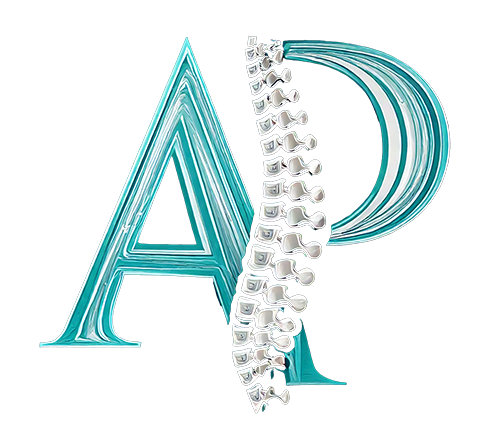Referred Pain

Sometimes pain is felt somewhere different to the area that’s caused it. We see this a lot with upper back stiffness causing the lower back to overwork and become painful. But referred pain is different: here the brain misinterprets the pain signal that it receives.
Understanding the Pain Signal
The body is full of nerves that can send a pain signal to the brain to alert it to potential danger. Everyone is slightly different, but we all follow a similar pattern of nerves. Each nerve supplies a stripe of the body with sensation.
Pain at any point in the stripe will trigger the nerve to send a signal to the brain. The brain knows which nerve is providing the message, but sometimes it misinterprets the detail. The misinterpretation is just like how some people have a heart attack without chest pain, just jaw or arm pain. If a joint within a stripe is irritated, such as the neck joint labelled above, the brain could assume the pain is anywhere within the stripe. As a result, you may feel no neck pain at all, just pain in the arm. But the arm wouldn’t be tender, and movement might not alter symptoms either.
Another commonly affected area is the pelvic joint: the SIJ. This can cause pain in the back of the thigh that can be easily mistaken for sciatica. But unlike sciatica, the pain is unlikely to be sharp or shooting, and tests that identify sciatica will come up negative.
With the heart attack example in mind, we do need to be aware that sometimes referred pain comes from organs. Again, there are patterns that we expect the body to follow, but there is overlap between referred pain that could be coming from a joint, and the same symptoms coming from an organ. We use our detailed case history to help catch these cases, but we will also monitor your progress and refer you for further investigation if appropriate.
Diagnosing Referred Pain
Although everyone’s stripes vary slightly, they are all pretty similar. Your osteopath will be able to tell which nerve is responsible by the area in which you feel the pain. From here, they can work back to other structures within that nerve’s remit to identify the irritated area. Looking at the way you move, as well as testing the joints and muscles passively, we can work out the joint or other area that’s causing the problem.
Managing Referred Pain
Identifying the cause is the first step towards getting on top of the pain. Often, once the problem area is identified, the referred pain should respond quickly to treatment. Whereas sciatica-type issues can take days or weeks to respond to changes further up the nerve, referred pain is often much more immediate. If the cause of the pain is a simple irritated joint, sometimes a quick click will take the edge off the symptoms. A combination of the usual strategies to relax off tight muscles and improve movement in joints can make a big difference, especially when supported with advice and exercises.
In any case, your osteopath can give you an idea of a prognosis at the end of your first session. Your osteopath will also give you a tailored plan and diagnosis to structure your recovery.

